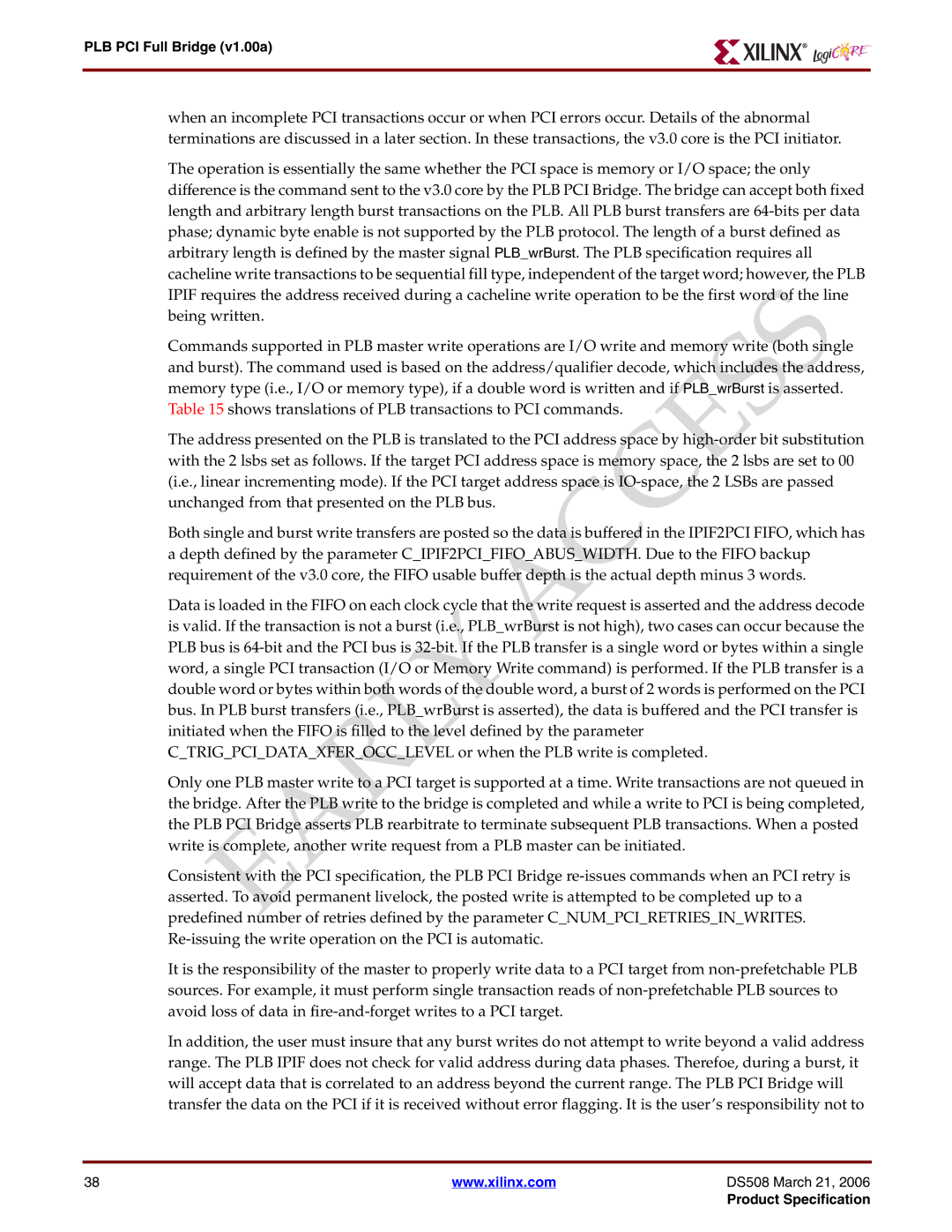
PLB PCI Full Bridge (v1.00a)
when an incomplete PCI transactions occur or when PCI errors occur. Details of the abnormal terminations are discussed in a later section. In these transactions, the v3.0 core is the PCI initiator.
The operation is essentially the same whether the PCI space is memory or I/O space; the only difference is the command sent to the v3.0 core by the PLB PCI Bridge. The bridge can accept both fixed length and arbitrary length burst transactions on the PLB. All PLB burst transfers are
Commands supported in PLB master write operations are I/O write and memory write (both single and burst). The command used is based on the address/qualifier decode, which includes the address, memory type (i.e., I/O or memory type), if a double word is written and if PLB wrBurst is asserted. Table 15 shows translations of PLB transactions to PCI commands.
The address presented on the PLB is translated to the PCI address space by
Both single and burst write transfers are posted so the data is buffered in the IPIF2PCI FIFO, which has a depth defined by the parameter C_IPIF2PCI_FIFO ABUS WIDTH. Due to the FIFO backup requirement of the v3.0 core, the FIFO usable buffer depth is the actual depth minus 3 words.
Data is loaded in the FIFO on each clock cycle that the write request is asserted and the address decode is valid. If the transaction is not a burst (i.e., PLB_wrBurst is not high), two cases can occur because the PLB bus is
C_TRIG_PCI DATA XFER OCC LEVEL or when the PLB write is completed.
Only one PLB master write to a PCI target is supported at a time. Write transactions are not queued in the bridge. After the PLB write to the bridge is completed and while a write to PCI is being completed, the PLB PCI Bridge asserts PLB rearbitrate to terminate subsequent PLB transactions. When a posted write is complete, another write request from a PLB master can be initiated.
Consistent with the PCI specification, the PLB PCI Bridge
It is the responsibility of the master to properly write data to a PCI target from
In addition, the user must insure that any burst writes do not attempt to write beyond a valid address range. The PLB IPIF does not check for valid address during data phases. Therefoe, during a burst, it will accept data that is correlated to an address beyond the current range. The PLB PCI Bridge will transfer the data on the PCI if it is received without error flagging. It is the user’s responsibility not to
38 | www.xilinx.com | DS508 March 21, 2006 |
|
| Product Specification |
